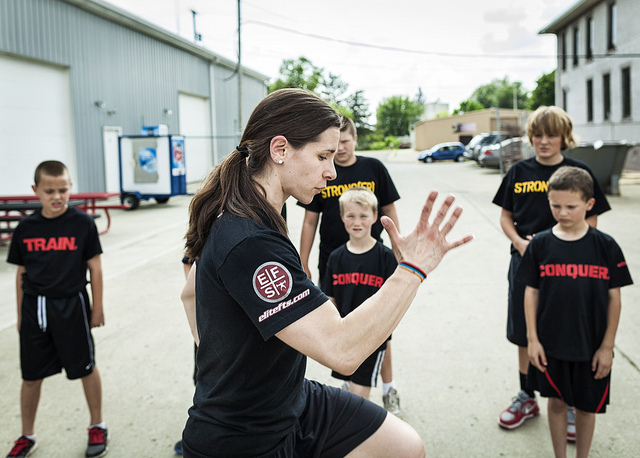
The title says it all, which is a quote from Tom Myslinski, currently the Head Strength and Conditioning Coach at Robert Morris University in Pennsylvania. Every youth sports related newspaper or magazine article you read these days has children as young as 7-8 years-old playing organized year-round sports. If you are not participating on one team, the other two teams you play on most likely have a game somewhere. On the flip side, computer games, video games, Game Boys and a whole host of other non-active "baby sitters" have changed the way our kids grow up. Gone are the days of all night "hide and seek" with your friends, climbing up trees, street football and stick ball; games which build the foundation for having the opportunity to achieve sports excellence later in life. Kids today seem to be in two categories over participation in sports or total inactivity.
The kids who play sports often have parents behind them, pushing them to be “super athletes.” Now parents want to know how their 7-12 year old can increase his or her linear speed or improve on their agility to improve his or her sport. They have been playing for 5 years and they are only 12 years old!
Physical Education classes in our schools are disappearing at an alarming rate; couple this with a school lunch program which is "marginal" at best, and now you have the makings of the "Perfect Storm" Less activity + more food = OVERWEIGHT KIDS! So now we are faced with two problems, on either end of the spectrum, too much or too little and no in between.
At the ages of 7-12, play is the greatest way to build the foundation. Children need a little bit of everything and a whole lot of nothing. Gymnastics, swimming, climbing ropes and trees, playing tag, performing wheel barrow races with a partner, hopping and skipping-all of these activities build the foundation of strength, speed, coordination, endurance, flexibility and mobility without the kid knowing he is actually training. “At an early age (approximately 6.5-9 years old+ 1 year), the initial preparation stage begins. This stage is the cornerstone in the pursuit of PASM (Process of Attaining Sports Mastery) and is characterized by the progressive development of motor skills through a traditional multifaceted motor preparedness and the creation of a functional groundwork for specialized perfecting of motor abilities. Its exclusive goal is to expose young athletes to a wide variety of physical skills, thus stimulating a healthy development and increasing their functional capacities, motor abilities and knowledge base. Additionally, exposing the pre-adolescent sportsman to a well-rounded curriculum negates the effects of early specialization and elevates their overall adaptation level”. (1)
With parents and coaches pushing their athletes to be “superstars” at young ages, this will actually lead to a decrease in sporting performance later in the athlete’s career (over the age of 18) when it really counts. These results can be confirmed based on several studies done by Harre from East Germany and Nagomi from the former Soviet Union. Are we really doing our children a favor by pushing them into organized sports at young ages? The answer is a resounding no! This leads to mental burn out and injuries which hinders or worse yet forces athletes to quit their particular sport.
Do I see our country changing the way we prepare our children for the future in sports? Probably not. As a matter of fact, it will most likely get even worse. The kids who do manage to succeed later in their careers will be the “survivors.” So the parents and coaches who want the best for their children will have to answer this question: Am I disciplined enough not to have my child/athlete begin an early, specialized, sports- specific program before he or she has the basic foundation set?
References:
Myslinski, T. The Development of the Russian Conjugate Sequence System.
For Elite Fitness Systems. (pg. 4-5).
Mark McLaughlin
Performance Training Center
4080 SE International Way
Suite B-109
Milwaukee, Oregon
97222
503-496-1032








